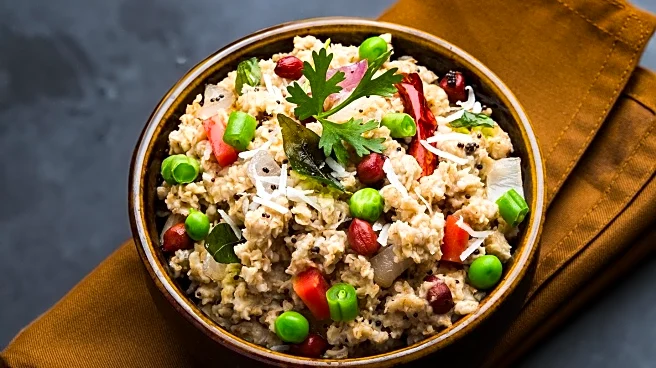What's Happening?
Chicken is a widely consumed protein source due to its versatility and lean nature. However, it can become monotonous for those seeking variety in their diet. A recent analysis highlights 11 foods that offer more protein per 100 grams than chicken, which contains 22.5 grams of protein. Alternatives such as turkey breast, canned tuna, and shrimp provide higher protein content, offering options for those looking to diversify their meals while maintaining nutritional richness. The analysis uses data from the USDA Food Data Central to compare protein levels across different foods.
Why It's Important?
Diversifying protein sources is crucial for maintaining a balanced diet and preventing dietary fatigue. By incorporating a variety of high-protein foods, individuals can enhance their nutritional intake and enjoy a broader range of flavors and textures. This approach can benefit those with specific dietary needs, such as athletes or individuals managing their weight, by providing options that align with their health goals. Additionally, exploring different protein sources can support sustainable eating practices by reducing reliance on a single type of meat.
What's Next?
As consumers become more aware of the benefits of diverse protein sources, there may be increased demand for alternative proteins in grocery stores and restaurants. This trend could lead to the development of new products and recipes that highlight the nutritional advantages of foods like turkey, tuna, and shrimp. The food industry may also focus on educating consumers about the benefits of varied protein intake, promoting healthier eating habits and encouraging experimentation in the kitchen.
Beyond the Headlines
The shift towards diverse protein sources reflects broader changes in dietary preferences and health consciousness. This trend may influence agricultural practices, as demand for alternative proteins could impact production methods and resource allocation. Additionally, the emphasis on variety in protein intake may drive innovation in food technology, leading to the creation of new plant-based or lab-grown protein options that cater to evolving consumer tastes.












